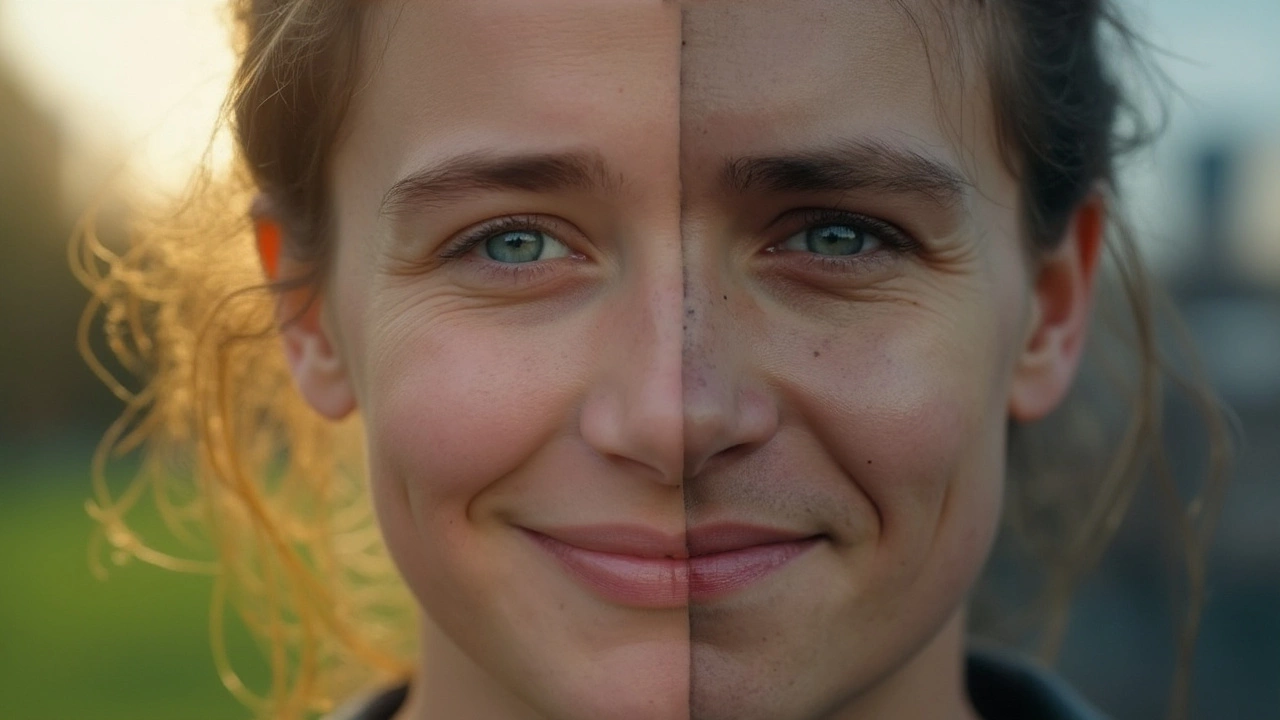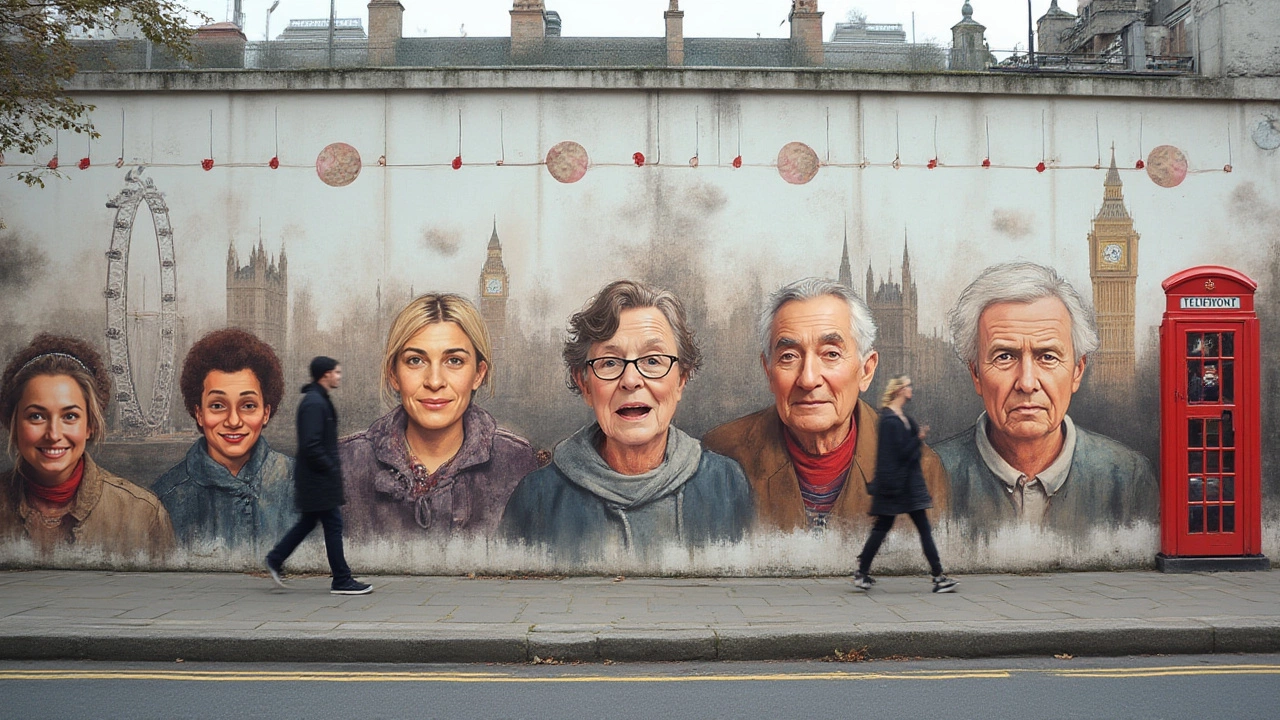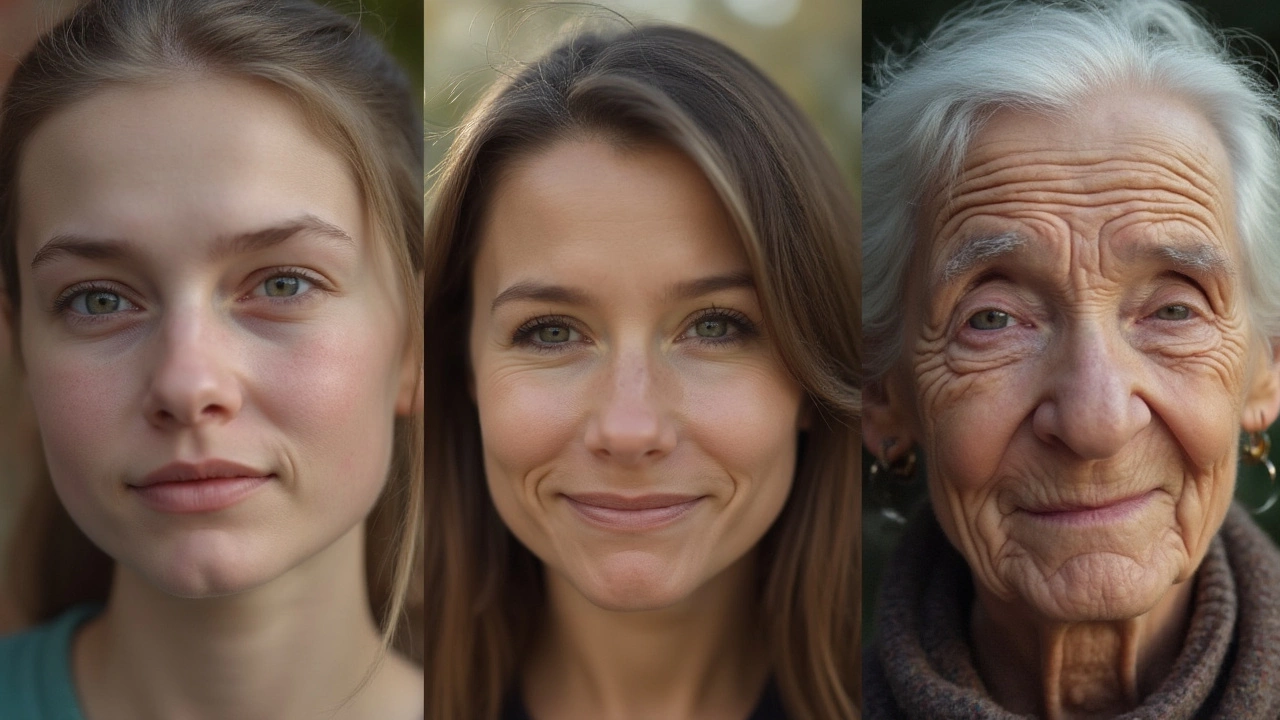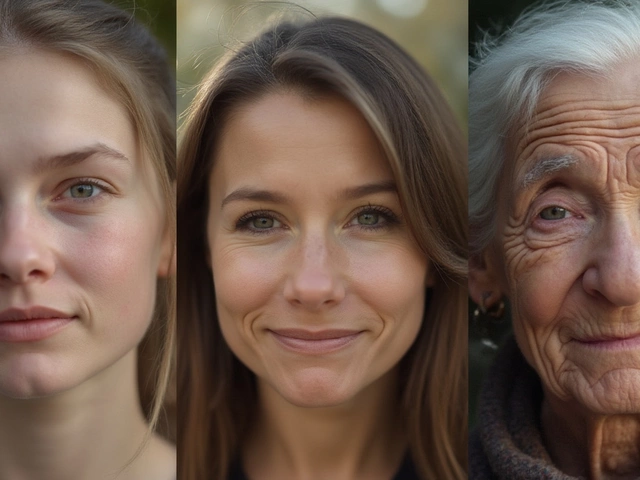Your face is like a living diary—one glance, and it tells a story that’s still being written. Look at baby photos, then peek in the mirror after a sleepless night, and you’ll see just how much that story can change. There’s a popular myth that your face changes in slow, steady increments—but the real answer isn’t that neat. Some moments are so dramatic you can almost watch your reflection transform, while others creep up on you in the background. The age when your face changes the most might surprise you—because it doesn’t happen in a single year, but in a handful of pivotal windows where everything shifts faster than you’d sometimes like. If you’ve ever wondered why your face looks totally different than it did a decade ago, or why an old friend from high school could pass as an entirely new person, you’ll find answers here. And no, it’s not just wrinkles—bone, fat, muscles, life’s chaos, and your skincare habits all play a part in when, and how, your face really changes.
The Science of Facial Aging and Why Certain Ages Stand Out
Most of us think wrinkles are the only telltale sign of getting older, but the process is way more complex. Your skin, the fat underneath it, your bones, and even your muscles get involved in a multi-layered drama. Although changes are happening every year, specific ages are especially notorious for major shifts. Face aging doesn’t strike suddenly, but there are stages when you’re likely to wake up and notice that something is changing – fast.
So, what actually triggers these big shifts? The main players are collagen and elastin, two proteins that keep your skin firm and bouncy. The moment you hit your twenties, your body starts producing less collagen—about 1% less each year, according to dermatology studies. Not fair, right? At first, you won’t notice it. But fast forward to your late 20s or early 30s, and you might start to spot fine lines, especially around the eyes (hello, crow’s feet), and mouth. Most people barely realize anything is happening at this stage—the changes are subtle, like those one or two stubborn forehead creases that just won’t smooth out.
Then, something shocking happens in your mid-30s to early 40s. This is the first "major" transformation zone. Fat pads that used to plump your cheeks start shifting or shrinking. Your skin thins, and where you once had a firm jawline, you get slight jowls or less definition. In a huge study published in the journal "Plastic and Reconstructive Surgery," researchers found that bone loss in the middle of the face is a huge driver of aging between ages 35-45. Your facial bones are sort of a scaffold, and as they shrink back, everything on top sags a bit. That’s why makeup tricks you loved at 25 might suddenly stop working—you’re not imagining it.
The next big leap happens in your 50s. Estrogen and testosterone decline mess with your skin thickness, moisture, and repair ability almost overnight. The lower face and neck are hit hard: you might spot deeper folds, sagging, or a change in your facial shape. In one widely-cited study, post-menopausal women lost up to 30% of their skin's collagen within the first five years—so yes, the speed of aging can hit warp drive. If you notice that someone’s face seems to age rapidly “all at once,” chances are they’re going through hormonal changes during this window.
But there’s another age window to keep your eye on: your 60s and beyond. Fat continues to shrink in the cheeks and temples, while your skin loses even more elasticity. Gravity steps up its game, and the struggle between bone loss and skin sagging becomes more obvious. Because these three windows (mid-30s to early 40s, 50s, and 60s+) overlap, many people report having a "sudden" change in their looks at any of these times.
The timeline looks something like this:
| Age Range | Main Facial Changes |
|---|---|
| Late Teens - Early 20s | End of puberty, adult bone structure appears, acne may persist |
| Late 20s | First fine lines, decrease in collagen and elastin, patchy pigmentation |
| Mid 30s - Early 40s | Visible dynamic lines, fat pad shifting, early sagging, uneven skin texture |
| Late 40s - 50s | Loss of facial fat, bone resorption, deeper wrinkles, pronounced folds |
| 60s and beyond | Significant sagging, hollowing, skin thinning, pigmentation changes |
It’s not all doom and gloom; some facial changes add character or soften harsh features, and remember—your genetics set the baseline. Want to see your face’s future? Peek at grandparents or relatives (but don’t blame them, please).

What Speeds Up or Slows Down Facial Changes?
This part might sting a little: many things that change your face fastest are actually in your control. Yes, you can blame genetics for a lot, but lifestyle is a huge factor. UV radiation from the sun is the number one accelerator of facial skin aging, far ahead of your DNA. A 2022 study from the American Academy of Dermatology found that up to 90% of visible facial aging is directly linked to sun exposure. (Yikes. That’s almost all of it!)
Smoking is on the list of worst offenders. Smokers get deep lines around their mouths and thinner skin much earlier, because cigarettes break down collagen and restrict blood flow. Alcohol doesn’t help, either; it dehydrates skin, creates inflammation, and makes capillaries visible. If you’ve seen someone with “drinker’s nose” or flushed cheeks, you know the effect isn’t subtle.
Chronic stress and poor sleep affect your face way more than we want to admit. When you don’t get enough rest, your body pumps out cortisol—a stress hormone that breaks down collagen and makes you look older, faster. People who consistently get under 6 hours of sleep a night see earlier deepening of forehead and under-eye lines.
On the flip side, the best things for slowing facial aging are pretty simple (but hard to consistently do). Sunscreen is magic in a bottle. Using SPF daily—not just at the beach!—will protect your skin from UV and keep it firm and even. Hydration, both from drinking water and using good moisturizers, can keep your skin from getting thin or dull. Eating a diet packed with fruits, veggies, and healthy fats provides antioxidants that offset some damage from sun and pollution.
Then there’s skincare routines. Retinoids are the only over-the-counter ingredient that’s proven (in dozens of peer-reviewed studies) to stimulate new collagen. Vitamin C serums can brighten and protect, while moisturizers with peptides support your skin’s structure. Recently, microcurrent devices and collagen supplements have gotten attention, but results vary—use them if you enjoy them, but don’t skip the basics.
Curious about how well you’re doing? Dermatologists use a system that rates facial aging on a 5-point scale, from “no wrinkles” to “severe changes.” The biggest jumps typically happen when years of small habits—like skipping sunscreen or going to bed with makeup on—suddenly "show up" in your late thirties and again around menopause.
- Quit smoking. It’s harder for some than others, but faces of long-term ex-smokers visibly recover within a year or two compared to current smokers.
- Make sunscreen your daily routine. Even cloudy days or winter light can trigger breakdown in the skin.
- Adjust your skincare with age. What worked at 20 will not work at 40, no matter how religiously you used it.
- Eat colorful foods for antioxidants (think: berries, tomatoes, avocados).
- Don’t underestimate regular sleep—it seriously matters.
And while it’s tempting to chase every new trend on TikTok, remember: simple, science-backed habits will give you the best results over time.

Why Do Some People Age So Differently—And What Can You Really Do?
Ever noticed that two people the same age can look completely different? One looks fresh-faced and glowing; the other might seem to have aged rapidly. Some of it does come down to genes. Researchers have found that certain people inherit skin that makes more (or better quality) collagen, and their bone loss is slower. This can make a huge difference at those critical changing-age points. For instance, people of African or South Asian descent often have thicker dermal layers and more protective melanin, aging more slowly than those with fair, thin skin.
But environment and choices always add up. People in rural areas—where pollution and stress are lower—show fewer signs of aging compared to city-dwellers. If you look at identical twins who lived in different conditions, studies show the twin who smoked, stressed out, or didn’t use sunscreen looked years older after midlife. It’s not magic; it’s all those habits stacking up like a credit card bill.
Advances in medical and cosmetic treatments can now actually slow or partially reverse visible signs of aging. Non-invasive procedures like laser resurfacing, microneedling, and injectables (like Botox and fillers) are everywhere. Lasers resurface the top layer of skin, tricking it into repairing itself faster. Fillers can replace fat that’s shrunk away or lift drooping areas. Botox, which freezes small muscle movements, prevents lines from getting etched in too deeply—especially if you start early.
Still, nothing can "stop" facial changes forever. Even the best treatments don’t halt the changes in bone and fat underneath. The trick is finding interventions you feel good about—and knowing when to start them. Don’t get pressured into anything by a friend or influencer; talk to a real dermatologist or aesthetician who specializes in aging. They’ll check your skin and give advice tailored for your face and budget (not everyone needs laser and filler at 38!).
Plenty of celebrities and public figures are now openly discussing their aging journey and cosmetic options. This transparency is freeing—you’re allowed to want to age “naturally” or get a little help along the way, it’s your call. The biggest regret for many is not protecting their skin from the sun or waiting too long before starting good, simple routines. If you start young—even in your teens—the payoff is bigger than you expect. But it’s never the wrong moment to start caring for your skin; every small action counts, no matter what your birth certificate says.
Here’s a rundown of real-life tips to keep major face changes at bay as long as possible:
- Use retinoids or retinols at night to boost collagen production.
- Apply vitamin C serum for antioxidant protection each morning.
- Moisturize daily—dry skin shows lines much more quickly.
- Don’t skip facial massages; they boost blood flow and drain puffiness.
- Wear sunglasses to stop squint lines and protect delicate eye skin.
- Add a humidifier to your room if your air is super dry.
Nothing replaces confidence—plenty of people find that embracing their changing faces feels better than chasing youth. Your face isn’t just a canvas for beauty tricks, but a map of where you’ve been and what matters to you most. Your best decade might be the one you’re in now—not the one in your yearbook picture.


